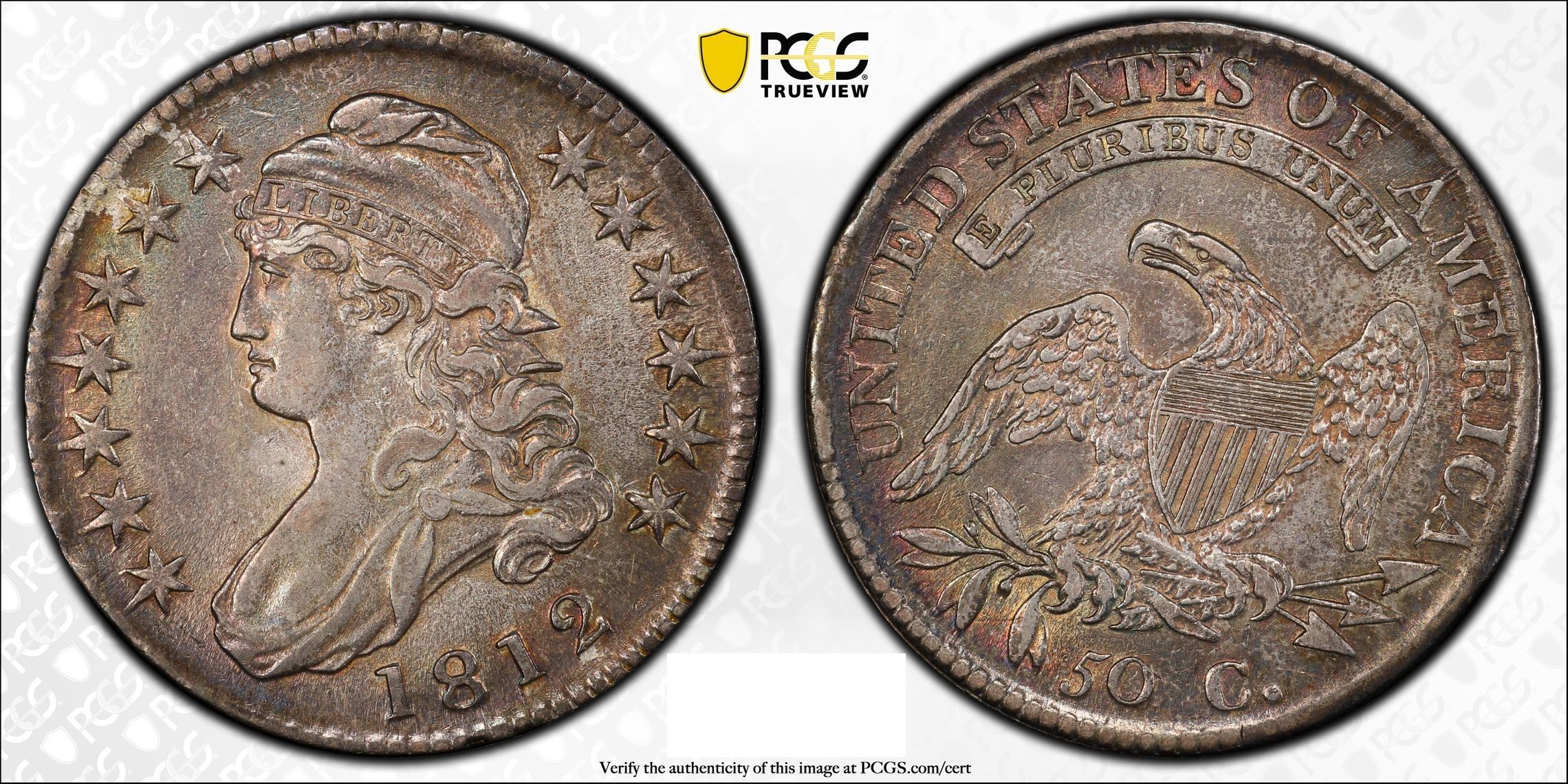One more for the Bustchaser
Time to treat myself again. Common DM, but one that I didn't have.
Just because I'm old doesn't mean I don't love to look at a pretty bust.
12
Time to treat myself again. Common DM, but one that I didn't have.
Comments
Nice one! Nice TruView too.
Very nice why not it’s not that common I don’t see it every day it’s a Beautiful coin.
Hoard the keys.
Very nice!
A: The year they spend more on their library than their coin collection.
A numismatist is judged more on the content of their library than the content of their cabinet.
Awesome toning
BHNC #248 … 130 and counting.
Cool coin! Worn die. O.104a. Looks around AU50.
Interesting denticles (or lack thereof). Are you able to see the edges? Any mishap with the lettering?
Normally you can see a fun half denticle segment over the U in UNITED (like below).
Lance.
@OKbustchaser Nice one! I had seen that one as well, and thought it had a pretty decent look, and at a reasonable price as I remember. I went back to look again, and it was gone. Glad you got it!
“We are only their care-takers,” he posed, “if we take good care of them, then centuries from now they may still be here … ”
Todd - BHNC #242
Sweet!
See http://www.doubledimes.com for a free online reference for US twenty-cent pieces
Thanks for the kind words, everyone. Depend on Lance to notice the rims and that it is a "Guido". He nailed the grade as well--50, but with a CAC sticker. I have it listed as the 104 rather than the 104a, though. It has the reverse die crack of the later die state, but it is missing the obverse crack.
That baby is a beauty! All around. Good date too!
@OKbustchaser opened the door with his cool example of a Guido. For those wondering, Edgar Souders, author of the treatise, "Bust Half Fever," wrote this about the Guido:
"A Guido is a CBH (capped bust half) that, when only in planchet form, was cranked through the edge lettering machine incorrectly and did not make a complete revolution between the bar dies. This means it is an edge-lettering error. But let me explain.
When a planchet was forced between the lettered edge bar dies it actually pushed in the edge of the planchet and made the planchet more or less perfectly round. This impressed the edge lettering and also upset the outer edge, to a degree, which helped force the metal up and into the WDs (working dies) during the later strike. However, when a planchet did not make a complete revolution, due to improper feeding, then the result was two small areas, directly across form one another that would not upset along the edge. After the strike occurred these same areas appear as flat spots along the dentilation.
To most collectors and dealers this flattened area on the struck halves looks like damage. Then too, damage can sometimes look like a Guido, but there are ways to tell the difference and those differences are as follows.
If you study the edge lettering on a true Guido you will note there is never lettering on the spot where the flat edge strike appears. Not a single letter! Why? Because this spot is exactly where the bar dies did not impress the planchet. Therefore the
edge was not pushed in by the edge lettering/rimming machine and not lettered. Thus, as the planchet expanded during the strike the metal flowed past this non-upset area. These flat spots show up on the obverse and reverse directly though to the opposite side. If you think you are viewing a Guido but you only see it on one side, and the other side appears fully struck up, then you are looking at damage.
If you draw a straight line directly across the coin, bisecting it, you will note that a flattened spot occurs at the other end of your bisecting line. The reason for this is due to the, earlier mentioned, improper feed through the bar dies. As each bar die impressed exactly half of the edge lettering – an incomplete crank through meant the planchet did not complete the length of the bar dies at both ends. This is why the flat spots appear across from one another.
Capped Bust half specialist, Keith Bellman, was the first to decipher this strange phenomena more than a decade ago."
Beautiful 1812.
Congrats!
Dave
@OKbustchaser.... Nice coin... but hardly common. I cannot recall the last time I got one in change. Oh, wait.. yes I can... NEVER!!!
 Joking aside, it is a nice bust half.
Joking aside, it is a nice bust half.
@lkeigwin .... Thanks for that excellent explanation of a Guido. Cheers, RickO